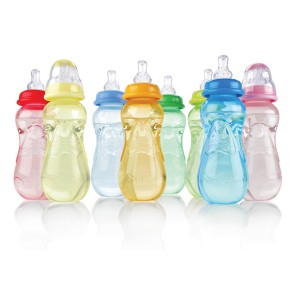BPA
What is BPA?
Bisphenol-A is a compound used to make plastics hard, coat paper, and to line cans and lids of food and drink products. It was originally developed to be a synthetic estrogen.
Why should I choose BPA free products?
Although there are no studies that show BPA is harmful to humans, the National Toxicology Program has expressed concern over its potential effects. Animal tests have shown that BPA disrupts the endocrine system. It affects the development of the brain, reproductive system, and immune system.
How to Avoid BPA
Check the recycling number on the bottom of plastic products.
– Plastics are numbered 1-7. 1, 2, 4, and 5 are considered safe. 3, 6, 7 contain BPA, Phthalates, and Styrene. Discard scratched plastic bottle, cups, or containers.
– Scratches harbor germs and may release small amounts of BPA.
Do not use extreme heat.
– Heat can increase the amount of BPA transferred to liquid and food.
– Only put containers marked “Dishwashers Safe” in the top shelf of the dishwasher.
– Use porcelain, glass, or stainless steel for hot items.
– Do not use the microwave to sterilize plastic, even BPA free products.
– Use warm, not hot, water to clean plastic products. Hot water is defined as water that is boiling or water from the faucet that produces steam.
– Occasional, no daily or weekly, use of steam sterilization is preferred as BPA is less likely to leak into steam rather than liquid water.
Use powder formulas.
– Some people are recommending the use of liquid formulas sold in cans have small amounts of BPA due to the lining used in the packaging.
By
Marilee Hartling, RN, MFT & ECDA Staff


Recent Comments